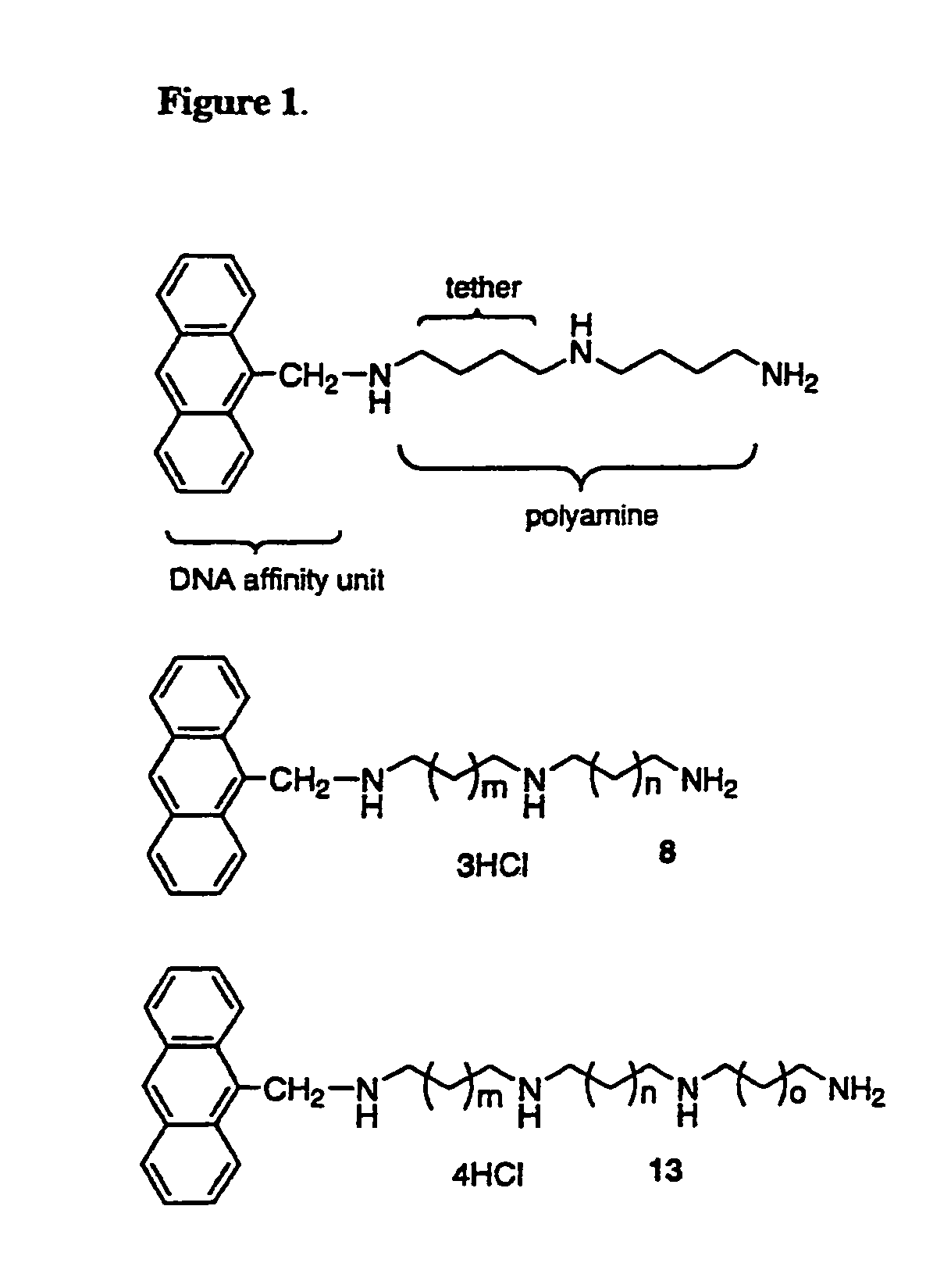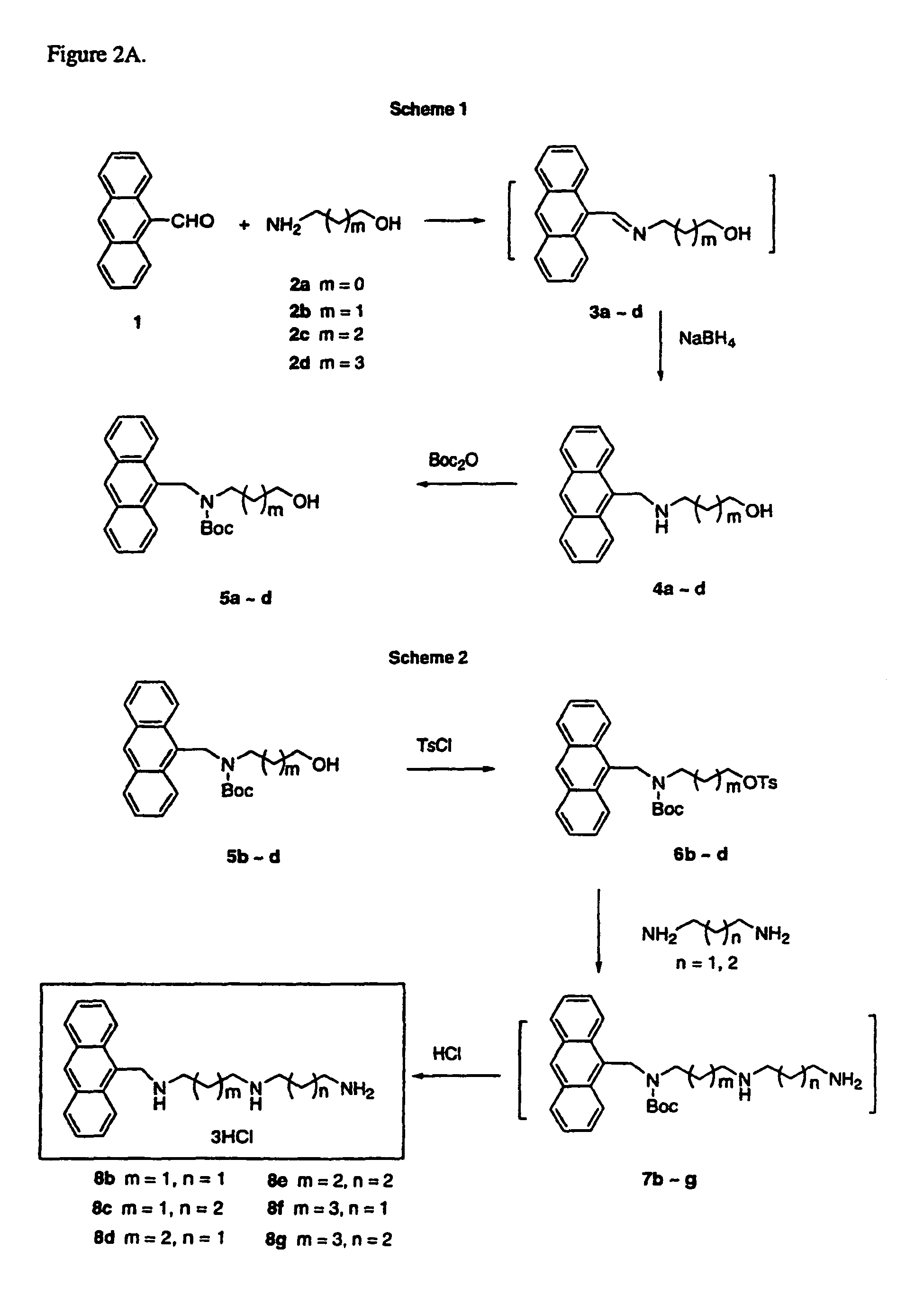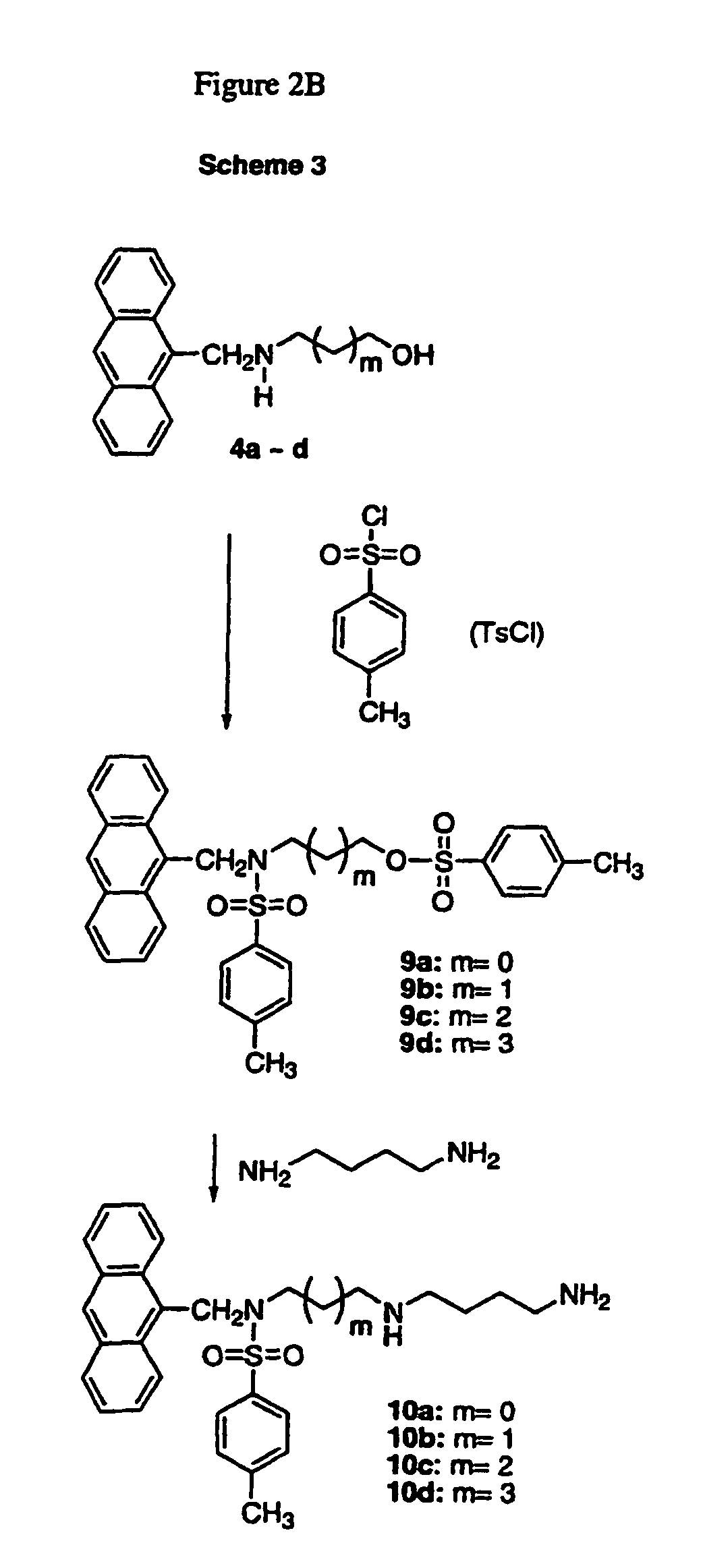Polyamine conjugates as selective NMDA inhibitors and anti-cancer drugs
a technology of polyamine and conjugates, applied in the field of polyamine compounds, can solve the problems of lowering the effective dosage required, bowlin's compounds are limited to activating cells, and non-optimal polyamin
- Summary
- Abstract
- Description
- Claims
- Application Information
AI Technical Summary
Benefits of technology
Problems solved by technology
Method used
Image
Examples
example 1
[0058]Synthesis: As shown in FIG. 2A, Scheme 1, the reductive amination of 1 to 4 was achieved in two steps via in situ generation of the imine 3. A homologous series of imines (3a˜d) were prepared from 1 and different alcohols. Each imine was then reduced to its respective amine 4 with NaBH4 in good yield without purification. Solvent removal by rotary evaporation at 40-50° C. facilitated imine formation and provided satisfactory yields of the 2° amines, 4a-d, (68˜81%) after the two-step process. The 2° amines 4a-d were N-protected to form 5 using excess di-t-butyl dicarbonate, Boc2O. Interestingly, compound 5b, which contained three methylene units, was unstable, even when it was stored at low temperature (0˜5° C.) under nitrogen. This finding is in direct contrast to 5a, 5c and 5d, which were stable at room temperature.
[0059]In the seemingly routine tosylation step, shown in Scheme 2, we were unable to obtain the desired compound 6a from the N-Boc protected 5a. In addition, the i...
example 2
[0068]Biological Evaluation. Three cell lines were chosen for bioassay. L1210 (mouse leukemia) cells were selected for comparison with the published IC50 and Ki values determined for a variety of polyamine substrates. In this regard both Ki and IC50 values were measured in this line for comparison purposes. Chinese hamster ovary (CHO) cells were chosen along with a mutant cell line (CHO-MG) in order to comment on polyamine transporter affinity and cell selectivity. The CHO-MG cell line is polyamine-transport deficient and was isolated after chronic selection for growth resistance to methylglyoxalbis (guanylhydrazone). For the purposes of this study, the CHO-MG cell line represents cells with limited polyamine transport activity. In contrast, the parent CHO cell line illustrates cell types with active polyamine transport. Comparison of efficacy in these two lines provided an important screen to detect conjugate delivery via the polyamine transporter, PAT. For example, a conjugate wit...
example 3
Experimental Section
[0080]Materials. Silica gel (32-63 μm) was purchased from Scientific Adsorbents Incorporated. Chemical reagents were purchased either from the ACROS Chemical Co. or the Sigma Chemical Co. and used without further purification. All solvents were distilled prior to use. 1H NMR and 13C NMR spectra were recorded at 300 and 75 MHz, respectively. TLC solvent systems are based on volume % and NH4OH refers to concentrated aqueous NH4OH. All final compounds listed in the Tables had satisfactory elemental analyses (a proof of purity).
General Procedure for the Synthesis of N-(Anthracen-9-ylmethyl)amino Alcohols 4.
[0081]To a stirred solution of amino alcohol (12 mmol) in 25% MeOH / CH2Cl2 (10 mL) was added a solution of 9-anthraldehyde (10 mmol) in 25% MeOH / CH2Cl2 (10 mL) under N2. The mixture was stirred at room temperature overnight until the imine formation was complete (monitored by TLC). The solvent was evaporated under vacuum to give the crude imine as a bright green sol...
PUM
| Property | Measurement | Unit |
|---|---|---|
| temperature | aaaaa | aaaaa |
| temperature | aaaaa | aaaaa |
| pH | aaaaa | aaaaa |
Abstract
Description
Claims
Application Information
 Login to View More
Login to View More - R&D
- Intellectual Property
- Life Sciences
- Materials
- Tech Scout
- Unparalleled Data Quality
- Higher Quality Content
- 60% Fewer Hallucinations
Browse by: Latest US Patents, China's latest patents, Technical Efficacy Thesaurus, Application Domain, Technology Topic, Popular Technical Reports.
© 2025 PatSnap. All rights reserved.Legal|Privacy policy|Modern Slavery Act Transparency Statement|Sitemap|About US| Contact US: help@patsnap.com



